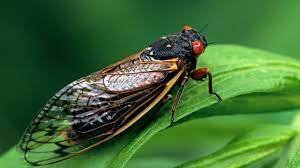Double Cicada Bloom 2024: Discover the Rare Google Doodle Celebration!
The Double Cicada Bloom 2024: Discover the Rare Google Doodle Celebration! Join us as we delve into the fascinating world of cicadas and explore Google Doodle's unique tribute to this once-in-221-year event.

Double Cicada Bloom 2024: Google Doodle Celebrates Rare Event with Band of Bugs
The "cicada-geddon" is due to the simultaneous emergence of Brood XIII and Brood XIX, with billions of cicadas coming out of the ground in parts of the Eastern U.S.
Today's Google Doodle celebrates the ongoing "cicada-geddon" — where two broods of cicadas have emerged together for the first time in 221 years. This event has caused billions, if not trillions, of cicadas to rise from the ground across parts of the Midwest and Southeast.
Brood XIII and Brood XIX emerge on 17- and 13-year cycles, respectively. "The co-emergence of any two broods with different cycles is rare because the cycles are both prime numbers," John Cooley, founder of the Periodical Cicada Project and a professor at the University of Connecticut's Department of Ecology and Evolutionary Biology, previously told Live Science. "Any given 13- and 17-year broods will only co-emerge once every 13 x 17 = 221 years."
The first cicadas of this year's dual emergence appeared in April, and the event is now in full swing. During the event, juvenile bugs that have been living underground hatch and appear at the surface as nymphs. They then become adults, shed their exoskeletons, and climb into trees to mate.
Males make a loud shrieking noise to attract females, who respond with a clicking sound. After mating, the females lay their eggs. When the eggs hatch, the young cicadas feed on tree sap before burrowing underground to start a new cycle.
Related
A trillion cicadas will descend on the US this spring in a rare event that could leave an unforgettable stench.
The event lasts until all the cicadas that have been living underground have come to the surface and complete their life cycle — about 3 to 4 weeks after emerging, according to the Smithsonian National Museum of Natural History.
Google Doodle celebrated the dual cicada emergence in the U.S. on May 29.
This year's double brood event is expected to last until June, although the exact timing depends on when the cicadas start appearing. In Illinois, Virginia, North Carolina, South Carolina, Georgia, Alabama, Mississippi, Tennessee, Kansas, and Missouri, sightings were widely reported by April 25, according to the Cicada Safari app, which tracks the event.
Related Stories
- Watch bizarre video of termites trapped in 'death spiral'
- Amazonian 'zombie' fungus bursts through fly's body in grisly, contest-winning photo
- Wolf spider mama wearing crown of babies captured in stunning photo
"In any given area, the emergence lasts about a month, depending on the weather," Cooley said. "But since this year's emergences cover such a range of latitude, there will be cicadas out much longer," he added.
Today's Google Doodle was created not only to celebrate this rare event but also to remind people that there is no reason to fear the bugs, which play an important role in their ecosystems.
"As the cicada shells pile up on trees and sidewalks and the buzzing fills your ears, try not to let them bug you," Google Doodle representatives said in a statement. "These clumsy insects fly by the trillions but don't sting, bite, or poison. Plus, many predictions show they'll be out of your hair by late June, leaving behind a feast for local animals like birds and raccoons."
What's Your Reaction?






















